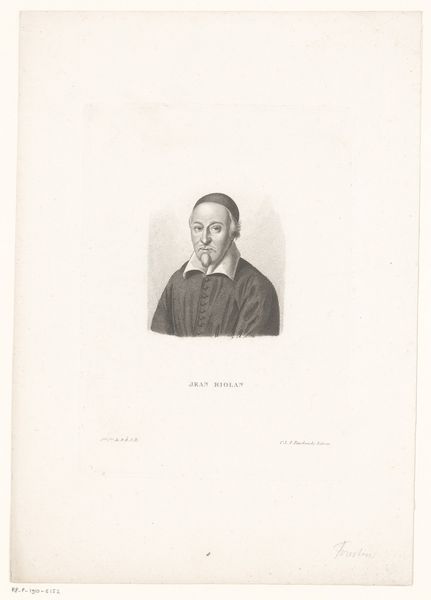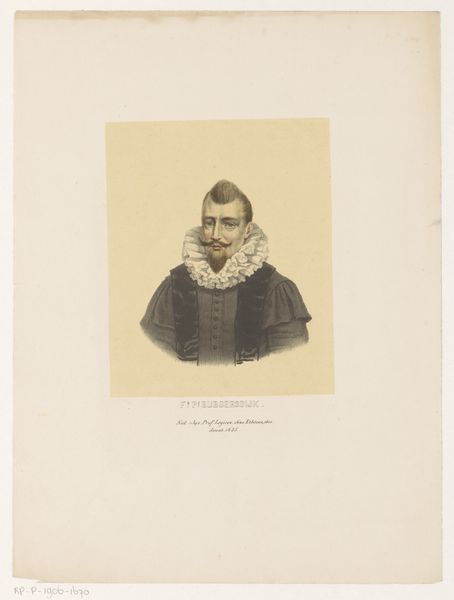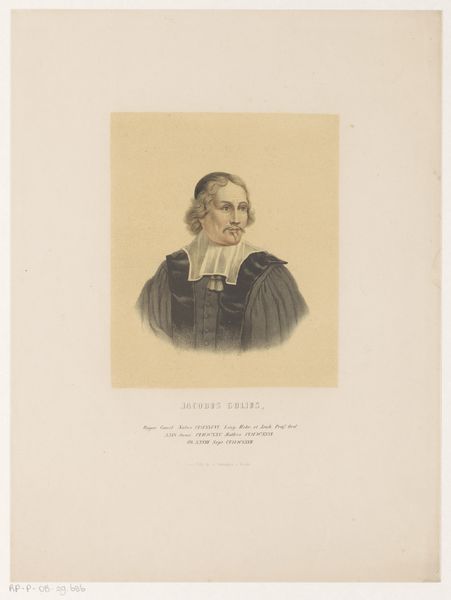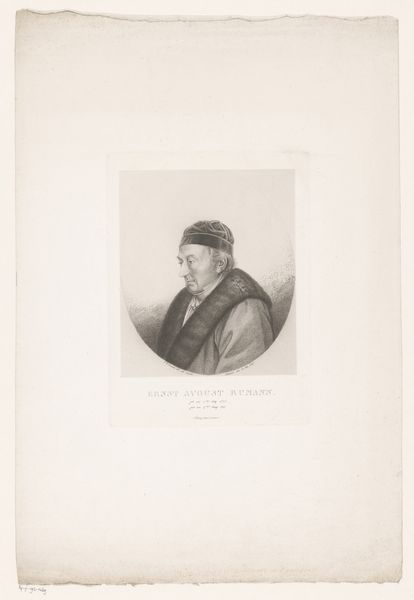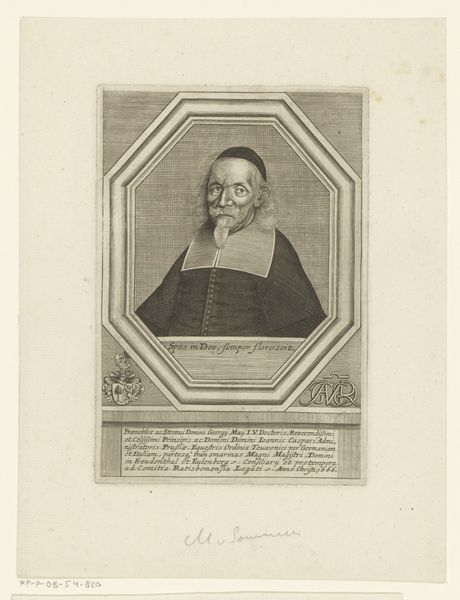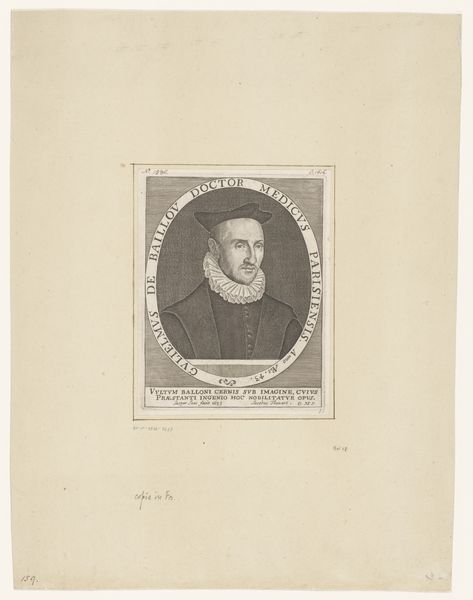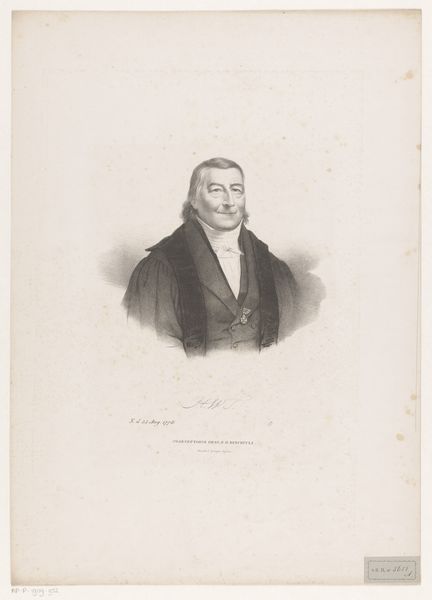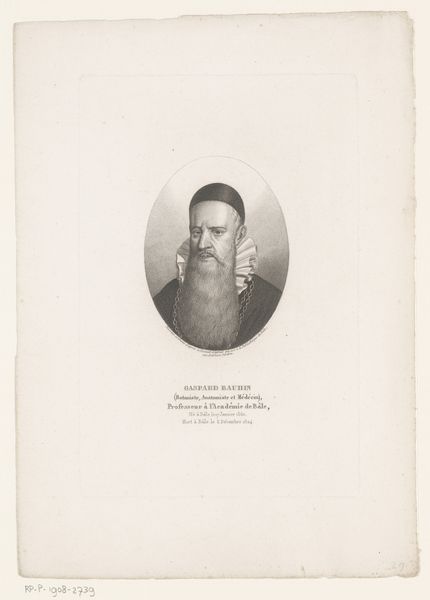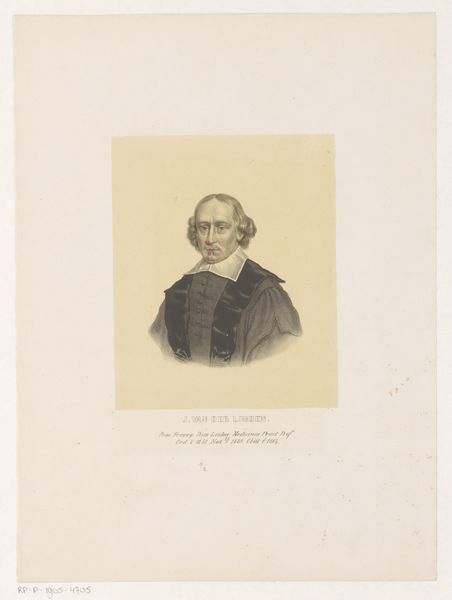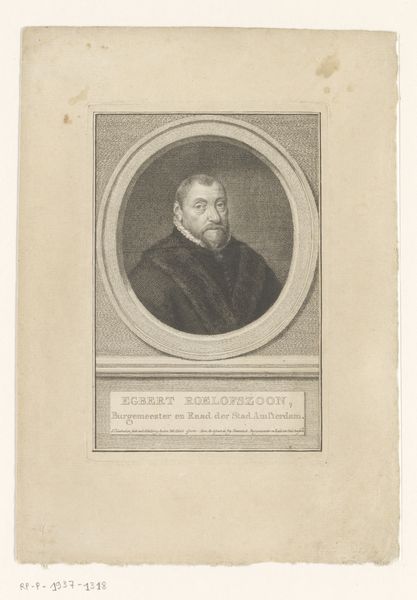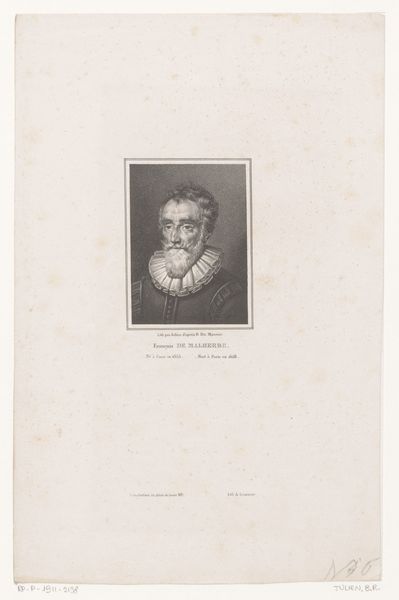
#
portrait
# print
#
history-painting
#
academic-art
Dimensions: height 361 mm, width 267 mm
Copyright: Rijks Museum: Open Domain
Editor: Here we have a print from around 1850, titled "Portret van Johannes Polyander van Kerckhoven" by Leendert (I) Springer. It’s interesting to see how they rendered a portrait with what looks to be a printmaking technique. How do you approach understanding this work? Curator: As a materialist, I’m particularly interested in the means of its production. It being a print immediately situates it within a broader social context. Consider the implications: who was commissioning such works, and for what purposes? What labor was involved, and how did that affect the final image? Editor: That’s interesting. I hadn’t thought about the labor behind a print. So, the act of printing allows for distribution of images to more than wealthy patrons of the arts? Curator: Exactly. Printmaking facilitated wider dissemination, reaching audiences beyond the elite who could afford original paintings. This brings in issues of standardization and the reproduction of power through image-making. We might want to examine how the specific printmaking technique employed impacts the perceived value and accessibility of the portrait. Is it mass produced or carefully crafted? Editor: So it democratizes the image somewhat but the labour involved can be significant if the artist cares for the craft. It speaks a lot about that period too. Are there any social clues we can glean from the style and apparel that we would otherwise miss? Curator: Absolutely, the sitter's attire and the overall style locate him firmly within a particular social and intellectual milieu. Consider the contrast between his plain garb and the meticulous detail afforded to his features. What does this say about the values prioritised at the time, the artist’s studio and workshops of the period? Editor: Okay, so, by understanding the printmaking process and considering who had access to this kind of image, we can move beyond just seeing a portrait, right? We start to see a whole social and economic world at work. Curator: Precisely. It’s about connecting the dots between materiality, production, and the broader societal forces at play. Material considerations illuminate the larger framework. Editor: Thanks! I will now be more mindful about materiality.
Comments
No comments
Be the first to comment and join the conversation on the ultimate creative platform.
